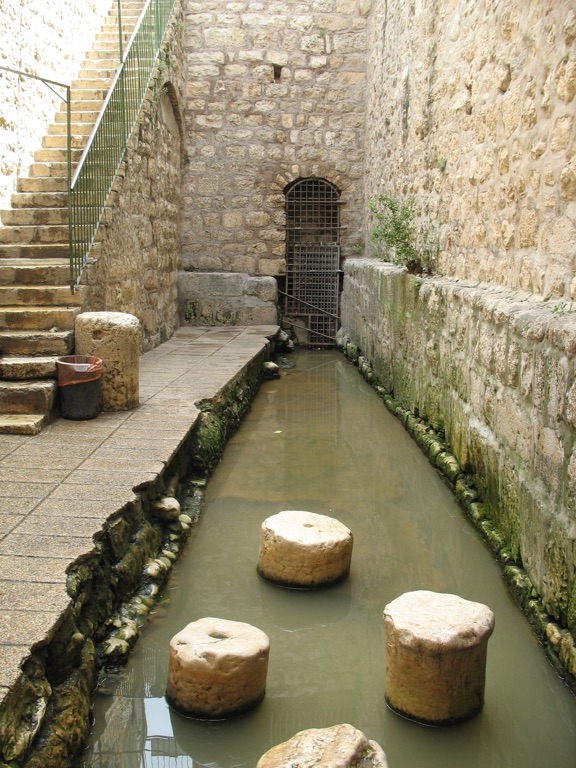The Pool of Siloam is a significant archaeological site located in Jerusalem. It is famed for its biblical associations, particularly in the New Testament, where Jesus healed a man born blind. Archaeologists uncovered the pool, revealing its complex history and importance in ancient Judean society. It served not only as a ritual bathing site but also as a vital water resource. The pool’s discovery has provided valuable insights into the engineering prowess of ancient civilizations and the religious practices of the time.
Get your dose of History via Email
Historical Background of The Pool of Siloam
The Pool of Siloam was discovered in 2004 during a sewer repair project. Workers stumbled upon ancient steps leading to a pool, which archaeologists later identified as the biblical Pool of Siloam. Excavations revealed that King Hezekiah likely constructed the pool in the 8th century BCE. This was part of his efforts to protect Jerusalem’s water supply from the Assyrians. The pool was fed by the Gihon Spring through Hezekiah’s Tunnel, an impressive feat of engineering.
Over time, the pool’s significance evolved. By the time of the Second Temple period, it became a major site for ritual immersion. This was especially true during the pilgrimage festivals. The pool also appears in the Gospel of John, where Jesus performs the miracle of healing a blind man. This event cemented the pool’s importance in Christian tradition.
Later, the pool fell into disuse and was lost to history. It was only in the 5th century CE that the Byzantines built a church nearby. This was to commemorate the miracle of healing. The site was then inhabited by various groups over the centuries. It included the Crusaders, who built structures on top of the ruins.
The Pool of Siloam was not just a religious site. It played a crucial role in the daily lives of the inhabitants of Jerusalem. It provided a reliable water source in a region where water was scarce. The pool’s design and construction reflect the advanced understanding of hydraulics and infrastructure in ancient Judea.
The discovery of the Pool of Siloam has shed light on several historical events. It has provided tangible evidence of biblical narratives. The site continues to be an area of active archaeological research. It offers insights into the religious, cultural, and technological developments of the time.
About The Pool of Siloam
The Pool of Siloam is an ancient reservoir located on the southern slope of the City of David, considered part of the historical Jerusalem. It was part of a complex water system designed to collect and store water from the Gihon Spring. The pool’s construction involved cutting into rock and lining the basin with plaster to prevent leaks, showcasing the ingenuity of its builders.
Archaeological excavations have revealed a large rectangular pool with steps on all four sides. This allowed access to the water for various purposes, including ritual immersion. The pool’s dimensions and the quality of its construction indicate its importance to the city’s inhabitants.
The materials used in the pool’s construction were typical of the period. They included large stone blocks and a type of mortar. The engineering techniques were advanced for the time. They ensured the pool could withstand the pressure of the water and the wear and tear of constant use.
One of the architectural highlights of the Pool of Siloam is Hezekiah’s Tunnel. It is a 533-meter-long tunnel that channeled water from the Gihon Spring to the pool. This tunnel is a testament to the advanced engineering skills of the ancient Judeans. It is still visible today and is a popular attraction for visitors interested in biblical archaeology.
The pool’s design and construction methods have provided valuable information about the Second Temple period. They have also offered insights into the daily life and religious practices of ancient Jerusalem. The Pool of Siloam remains a key piece of evidence in understanding the city’s history and development.
Theories and Interpretations
Several theories surround the Pool of Siloam, particularly regarding its use and significance. Some scholars suggest it was primarily a mikveh, or ritual bath, used for purification by the Jews of the Second Temple period. Others believe it played a role in water management and distribution for the city.
The miracle of Jesus healing the blind man at the Pool of Siloam has led to various interpretations. Some view it as a historical event that confirms the pool’s location and use during the time of Jesus. Others see it as a symbolic story reflecting the transformative power of faith.
Mysteries about the pool include the exact date of its construction and the full extent of its use. While it is clear that the pool was part of a sophisticated water system, the specifics of its operation and maintenance are still being studied.
Archaeologists have matched the pool to historical records using various dating methods. These include typology of ceramics found on site and radiocarbon dating of organic materials. These methods have helped confirm the pool’s age and its relevance to biblical accounts.
The Pool of Siloam continues to be a subject of academic research and debate. Its discovery has prompted a reevaluation of historical and biblical narratives. It has also sparked discussions about the intersection of archaeology and theology.
At a glance
Country: Israel
Civilization: Judean
Age: Constructed in the 8th century BCE
Conclusion and Sources
Reputable sources used in the creation of this article include:
- Wikipedia: https://en.wikipedia.org/wiki/Pool_of_Siloam

